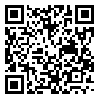Tue, Sep 2, 2025
| فارسی
Volume 19, Issue 2 (Summer 2013)
IJPCP 2013, 19(2): 121-133 |
Back to browse issues page
Download citation:
BibTeX | RIS | EndNote | Medlars | ProCite | Reference Manager | RefWorks
Send citation to:



BibTeX | RIS | EndNote | Medlars | ProCite | Reference Manager | RefWorks
Send citation to:
Dejkam M, Elhami Asl M, Bakhshipour Roodsari A, Ghazanfari H. Modeling of Emotional Disorders of Fear and Distress Spectrum . IJPCP 2013; 19 (2) :121-133
URL: http://ijpcp.iums.ac.ir/article-1-2040-en.html
URL: http://ijpcp.iums.ac.ir/article-1-2040-en.html
1- Shahid Beheshti University of Medical Sciences, Tehran, Iran
2- student research committee of Shahid Beheshti University of Medical Science ,minaelhamiasl@yahoo.com
3- Tabriz University, Tabriz, Iran
4- Tehran Institute of Psychiatry- Faculty of Behavioral Sciences and Mental Health, Iran University of Medical Sciences, Tehran, Iran.
2- student research committee of Shahid Beheshti University of Medical Science ,
3- Tabriz University, Tabriz, Iran
4- Tehran Institute of Psychiatry- Faculty of Behavioral Sciences and Mental Health, Iran University of Medical Sciences, Tehran, Iran.
Abstract: (12704 Views)
Objectives: The goal of this study was modeling emotional disorders based on fear and distress factors in non-clinical Iranian population. Method: In this study which was based on structural equation modeling plan, 800 undergraduate students from Shahid Beheshti University of Medical Sciences were selected by a multi-level clustering method, and were asked to complete Albany Panic and Phobia Questionnaire (APPQ), Phobic Stimuli Response Scale (PSRS), Social Phobia Inventory (SPI)، 4th edition of GAD Questionnaire (GADQ-IV), General Behavior Inventory (GBI), and second edition of Beck Depression Inventory (BDI-II). Data were analyzed using structural equation modeling. Results: The results showed that symptoms of panic, agoraphobia, social and specific phobia disorders loaded on fear factor and distress consisted of depression, dysthymia and generalized anxiety. This finding proved stability and repetition of internalization spectrum disorder modeling based on both fear and distress factors. Conclusion: Although, these findings were congruent with previous research performed in western societies, making conclusion about reliability and universality of two-factor structure of internalization spectrum disorders, in general, and specifically its reliability in Iranian society, require further studies.
Type of Study: Original Research |
Subject:
Psychiatry and Psychology
Received: 2013/12/28 | Accepted: 2013/12/28 | Published: 2013/12/28
Received: 2013/12/28 | Accepted: 2013/12/28 | Published: 2013/12/28
| Rights and permissions | |
 |
This work is licensed under a Creative Commons Attribution-NonCommercial 4.0 International License. |



